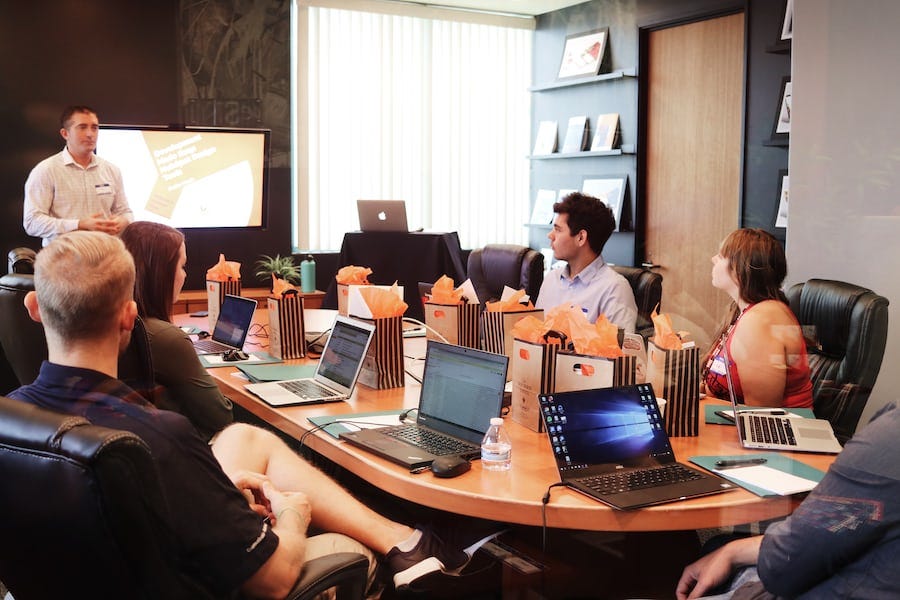It’s been a hard year on various fronts, particularly for employees in certain industries and businesses as they grapple with record 75 bp rate hikes for months now which makes everything more expensive across the board.
Fortunately, the Fed won’t hike forever, and hopefully, sooner than later they can engineer a soft landing and launch a bull market instead!
Although it’ll take a surprisingly upbeat 2023 to claw back all of 2022 losses, right now businesses’ top and bottom lines in certain industries of all sizes aren’t faring that well, especially as Black Friday spending came in lower than expected.
Even in the most defensible, almost recessionary-proof industries of consumer staples, technology, and once presumed financials, have all had to drastically pivot by announcing layoffs, restructuring, stock splits, lower pay, cut in bonuses, and hike in prices all in an effort to stay the course to save themselves.
As M&A, SPACs, and PE deal-making have had a dismal year with subdued baseline valuations, dry powder, and lower multiples, cash-strapped companies, even our favorite over-priced FAAMG stocks are getting hit.
It’s a bit bizarre to see how multi-billion dollar corporations that were cash-flow positive since they were founded and those we once thought were inelastic, are still as volatile as a small business that sells Halloween decor when prices rise.
Clearly, everything in the market is volatile after all! That’s the price we pay as investors. Equity risk premium is found in any risk-asset after all. More risk clearly doesn’t always mean more return, except for in the frothy speculative days of 2020–2021 when everything went to the ‘moon’!
Since 1Q ’22, markets have been seesawing and as we approach the end of another wild year, Wall Street forecasts which came out this week for YE 2023 estimates are completely mixed which means having a considerable amount of safe haven assets in the back of your pocket through short-term CDs, treasuries (bills, notes, bonds), cash in a high-yield savings account, and alternative assets such as real estate, farmland, artwork, collectibles, you name it, will serve you better in the near short-term, at least until we get a better read on the Fed’s expected tapering plan in 2023.
Quantitative easing (when the Fed buys more bonds to pump more money into the economy) isn’t in the cards for next year after the year and a half of excess stimulus on the monetary and fiscal side which caused all this rampant spiraling inflation today.
As we hear about more layoffs and smaller bonuses on Wall Street, this is making investors cautious and increasingly anxious for the future, especially since these companies were predicted to withstand any storm.
I guess everything is uncertain.
Hopefully what isn’t uncertain is the Santa Clause surprise rally during the last few weeks of December. Since investing is all about getting rich slowly, buying into the bargain-basement deals such as in Big Tech and commodities earlier than later never hurts, especially since many companies will never be trading at these low multiples we’re seeing today in the foreseeable future.

Why Layoffs, Cost Cutting and Disappointing Earnings Won’t Induce a Recession
Nowadays good news is bad news. The economy is in a paradox after all! Soaring 40-yr high inflation while profits are down is the most obvious example.
Spending and more economic activity are terrific but slower earnings growth, overspending, supply chain shocks, dismal savings rates, wages not keeping up with inflation, and lower purchasing power aren’t preferred.
Pondering if the housing market will burst in Q2-Q3 2023 is a prediction for another day but given consumers and the economy are in a much stronger financial position than in the past and inventory levels are at much healthier levels compared to in excess during the Great Financial Crisis of ’08 when soaring demand and not enough financial stable buyers led to a steep drop in home prices and equity a.k.a net-worth for millions of Americans, we’re on pretty stable ground today.
The only thing to worry about is the dismal national savings rates and rising levels of unemployment pushed by the Fed’s hawkish plans. Hopefully it won’t go too far.
With too much borrowing, speculation, and froth, no safeguard is in place. If there’s anything we learn from past crises, it’s that cash is king after all.
Although home prices declined by ~20% in ’08, if you were a creditworthy homeowner that was able to withstand the deep drop in prices, foreclosures, not tempted by the dangerous lending, and owned full equity in your home till today, you’ve made a sweet sweet return.
Fortunately, since the housing collapse, borrowers are screened and vetted more carefully now as subprime mortgages and cheap loans aren’t given out to any borrower nowadays to protect the economy. Bank reserves are monitored and so are the fancy complicated derivates created.
Heads or Tails?
With all these headwinds and news from Silicon Valley to Wall Street, is this another indicator to watch out for a possible recession?
Although it can be troubling to hear all the noise, in the grand scheme of things, we must remember that tech layoffs only account for about 2–3% of the workforce in the U.S.
If you find you’re only hearing bad news 24/7 it is likely because you keep up with markets, follow the media outlets, maybe work in the sector yourself or live in a tech/financial hub in the first place! What we pay attention to, we eventually become.
When you consider real recessionary risks, they include:
-Stubbornly high inflation: excess inventory in the grocery stores to real estate, wages aren’t keeping up with inflation
-Crazy consumer sentiment and spending
-Wild oil price swings
-Layoffs in cash-cushioned sectors
-Hawkish plan has gone wrong — unable to engineer a soft landing
-Equities whiplash with higher borrowing costs
If there’s one indicator from the past 40 years that has proceeded a recession, it’s an inverse in treasury yields a.k.a a treasury inversion curve.
This means that treasury bills and notes that mature sooner yield higher rates than long-term treasury bonds on the yield curve.
This is a sign investors are not only taping into short-term illiquid cash-equivalent investments, they are also concerned equities won’t fare as well as bonds, which are having their worst year in a few decades.
Currently, treasury bills and notes are yielding higher than bonds maturing in over a decade but we must take a step back and look at the bigger picture as well. Although history repeats itself, it does so in different ways!
This may not cause a recession this time around if the Fed steers the economy in the right direction at the right time.
Once risk-assets retreat and their prices start trading at elevated levels at around 10–20x earnings again most likely in H2 2023, investment yields will go in the opposite direction so now is arguably the best time to secure a risk-free rate of return for a 2–3 month treasury bill yielding ~4.1%!
Not bad for a guaranteed return with no effort, timing, real betting, or number crunching!
If you invest $10k, you earn $400 in 2 months. These deals across equities and fixed income don’t last forever so might as well take advantage of them while you can.
Don’t rely on banks to earn you much on your deposits either. Most savings accounts still aren’t ‘high-yielding’ or competitive to treasuries despite record rate hikes this year. Shop around with your investments and do your homework. It’s just as important as with Black Friday deals.
Although tech layoffs sound frightening, especially to Twitter employees who’ve dealt with enough this year alone, these are one of the most prized skilled workers in the workforce that not only have an in-demand irreplaceable skill set of being able to code and create the future, but they’re savvy, entrepreneurial, creative, and have grit, something that will always beat plain talent.
Habits > Talent! Plus, with all ex-Twitter employees now free to fly, ironically, I’m finding all over Twitter they’re announcing their new roles somewhere else in no time! I guess it’s not a bad place to mention where they’ve headed next. The only thing is, they are boosting Twitter’s profit in the meantime by still engaging on the platform.
Big Tech may be big, maybe too large at this point as a monopoly eating up all smaller incumbents in the space, but don’t be lured by fancy gadgets and billions in cash reserves.
The sector may not be as immune as we may have thought so staying diversified with your metaverse predictions and portfolio is essential to weather any storm. Make your own predictions, follow what you can control, and question everything, not only during the bearish times.
Thankfully nothing lasts forever, so sit tight, always be searching for what you truly deserve, and never stay complacent to reward yourself in the end.

